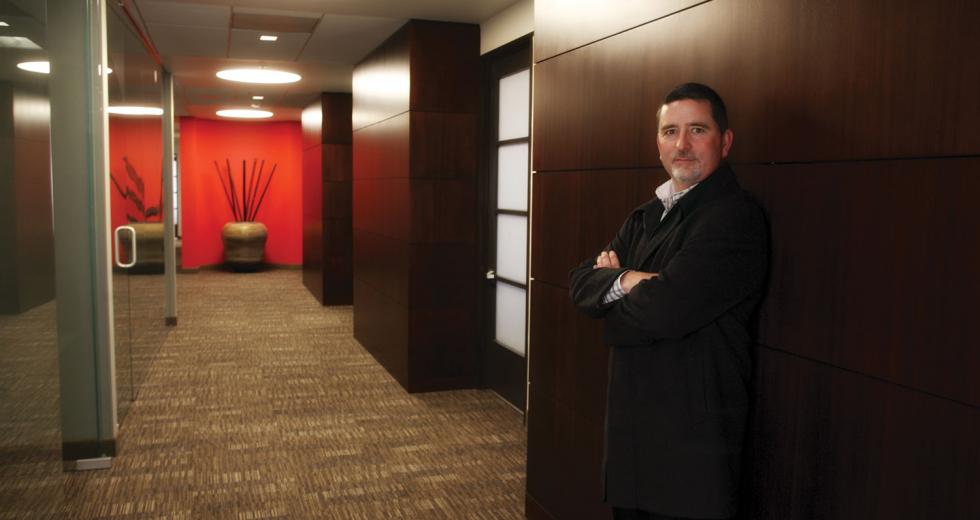The Capital Region’s tenant improvement market is trudging along, mired by a deep air of malaise following years of construction decline. A number of the area’s largest contractors again posted stagnant work volume and are despondent when discussing 2012’s contract prospects.
“Its very difficult to make money. There are a lot of smaller guys trying to do the big stuff, the big guys are trying to do anything that’s small, and everyone is chasing very little work,” says Paul Cunha, vice president of business development at SD Deacon Corp. of California, the seventh-largest general contractor in the area, according the Sacramento Business Journal’s Book of Lists.
HMH Builders reported $5.7 million in revenue from tenant improvement work in the Capital Region last year, a decrease from $11.8 million in 2008 and $18.5 million in 2010.
“These numbers may not correspond well to the national economy, but we had projects in the pipeline that were funded so that is why you see an uptick in 2010. Of course once those were completed, our local revenue dropped,” says company President David Higgins Jr. “To counteract the loss in local revenue, we are traveling farther for work, but that revenue isn’t in these numbers. We have remained profitable, although margins are nowhere (near) what they were three years ago.”
Likewise, SD Deacon Corp. and Roebbelen Contracting Inc., the region’s third-largest general contractor, have seen stagnation in the number of tenant improvement projects they’ve spearheaded since the financial markets crashed in 2008.
For SD Deacon, some of the most consistent TI work has come from reconfiguring retail space, including Target stores and now-empty Mervyn’s.
“With retail, you have to keep the store fresh, so they’re always doing something. [Places] like Mervyn’s closed, so we’ve been backfilling Mervyn’s, sometimes with two or three tenants,” Cunah says. “Even our work for Target has been reconfiguring stores, putting in groceries and taking out nurseries. We’ve only built one store lately, and we have reconfigured 30 to 40, though we are doing the least amount of them this year because they have kind of caught up to what they’re doing.”
The most consistent TI work for Roebbelen comes from reconfiguring AT&T call centers throughout the Pacific Northwest.
“It’s kind of like busy work; its just a lot of movement within the same facilities,” says Frank Lindsay, Roebbelen’s director of business development. “What we’ve seen in the past year and a half, as far as cash flow, is steady. There has been a lot of consolidation, so there has been a consistent flow of work. Not necessarily growth work, but work.”
With the Capital Region’s office market lacking all signs of
life, and the area’s industrial market expanding only modestly,
tenant improvement contractors anticipate few new, big contracts
in 2012.
“Tenants are not moving, they are renegotiating existing leases,
called blend and extend, so they may get some money from their
landlord to freshen their spaces; mostly paint and carpeting,”
Higgins says. “There is also a fair amount of deferred
maintenance projects occurring, replacement of worn out
equipment, etc.”
The average cost of a complete TI project in a class A office building in this region ran roughly $60 to $70 per square foot last year, according to Higgins. That’s about $20 per square foot less than it was just a few years ago. Designs are more conservative, less creative. Plus, the bidding market is “cutthroat.”
Higgins says he’s seeing many bids come in priced below cost,
with contractors’ fees down 5 to 10 percent. This at a time when
global demand for copper and aluminum is driving materials prices
up.
Class A office rents are averaging $1.89 per square foot in
Roseville and $2.64 in downtown Sacramento. For class B space,
Roseville rents show about a 20-cent difference per square foot,
but in downtown Sacramento, rates are nearly a full dollar less.
Weintraub Genshlea Chediak Tobin & Tobin, the original tenant of 400 Capitol Mall, saw its lease come due last year and had a range of relocation opportunities.
The offices of the now-defunct McDonough Holland & Allen law group were on the market at that time, “and we had a very fair proposal,” says Weintraub Managing Shareholder Mike Kvarme. “We at least looked at everything out there. If you are willing to go suburban, it’s obviously a completely different analysis and set of factors. You could get bigger or more expensively furnished if you move outside of downtown, but then you have all the issues with not being downtown. We had a lot of different stuff proposed to us, including completely new buildings.”
Hines, the building manager for 400 Capitol Mall, offered a tenant improvement deal that ultimately retained the firm and its 60 attorneys. Weintraub’s 42,000 square feet received a substantial overhaul, including the removal of a large, antiquated legal library, reconfiguring of shared space and the addition of high-efficiency lighting.
“We thought there was value to staying in the space — we have an identity with our building,” Kvarme says. “We were surprised at how much we got for our money. I don’t think the construction costs have gone down as much, though the green elements are less expensive than they were a few years ago just because they’re more prevalent.”
Other notable transactions in the region last year included Rocklin Academy occupying 64,000 square feet at 660 Menlo Drive, a state agency relocating from the Mayhew Tech Center off Highway 50 to 40,800 square feet on Gold Center Drive, and Deloitte moving from Rancho Cordova to 980 9th Street in downtown Sacramento, which was built by MarketOne.
As has been the case in the past several years, area landlords still are picking up much of the tenant improvement tab, especially for office deals, according to Tom Ford, president of MarketOne Builders, one of the fastest growing, full-service general contractors in the Sacramento valley.
For offices, tenants can expect to get allowances from about $25 to $35 per square foot from landlords. Anything over this amount is either the tenant’s obligation or amortized into the lease, Ford says. “Sacramento is a very quiet market these days compared to what we see in the Bay Area. There are no large TIs in the pipeline we are aware of at this time,” Higgins says. “The biggest user is the state of California. With their new provision to be able to end a lease at any time, there has been a couple of deals in the pipeline we have seen go away. I think Sacramento’s economy is still very dependent on the state and firms that do business with it. Until we build a more diverse business environment here it will remain that way.”
Recommended For You
Tenant Tactics
How to plan for tenant improvements
Tightening belts may be the overall theme in commercial real
estate these days, but a little planning can turn into big
savings. Business owners looking for a home and landlords seeking
tenant upgrades can trim expenses without shredding the wish
list.

Rent the American Dream
Sacramento millennials aren't interested in mortgages
Brian Collins is a 26-year-old director of accounts at Sacramento-based mobile applications marketing firm Appency. He makes what he calls “decent money,” is putting lots of it into a 401(k) and has an eye on his financial future. And, like most people his age, he’s decided that buying a house is not part of the plan.



